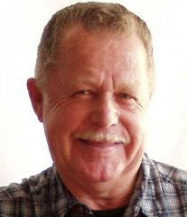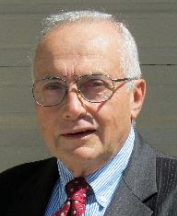EAS Alert: Is EAS a Joke?
[February 2018] Anyone who has been following the topic of EAS alerts and Public Warning issues knows the problems – from Hawaii to Tsunami Alerts on the East Coast to Emergency Managers who ignore EAS yet try reverse 911 in an area where fires have burned out the phone lines. And we should also remember the broadcast community which has tended in recent years to run only the required tests. Has the technology or the culture moved beyond EAS. Two California engineers address the issue.
YES

by Chuck Hastings
I see EAS as a joke, because it cannot achieve its primary mission.
And it will not until it includes a “key element” that was used before 1951 when Conelrad System (Control of Electromagnetic Radiation) was launched. In 1963 Conelrad was replaced with the EBS (Emergency Broadcast System) but that key element was sidelined.
Then in 1997 when the EBS was replaced with the current EAS (Emergency Alert System) that key element was all but lost – with the exception of certain states where they understood more on the primary objective of an Emergency Warning System.
They key element of any alert system: “To warn everyone of impending danger or threat.”
Every citizen, or the entire public, should get the warning, whether they are roller blading, running their dog, sleeping, or in the pool doing laps.
The same apples for those people who may be walking with noise canceling headphones listening to their favorite CD from their fanny pack CD player. Or, how about those being in an auditorium filled with people and all cell phones are silent, no radio and no TV?
Here in Ventura County, we have had several emergency situations where Emergency Management officials were unprepared and either did not issue warnings to everyone or they used ineffective methods. Reverse 911 does not work when fire burns the phone lines.
The EAS is a good concept, and it will reach many, but not all.
Would it not be prudent to use the old tried and proven Civil Defense Siren of the past. Not just for tornado warnings, but like Hawaii where it is for multiple alarm warnings like a Tsunami warning, ICBM warning, and any other danger that would threaten the Islands.
Maybe, just maybe something in that order could be included in the national infrastructure considerations of the present administration.
If properly set up with EAS and other notification systems I would feel more comfortable knowing I will get the warning audibly through an ear piercing siren tone along with Radio or TV notification. It would cause me to immediately check the radio or TV or or my cell phone to see what the warning is all about.
– – –
Chuck Hastings is a long-time contract engineer based in Camarillo, CA. You can contact Chuck at: crh-bes@juno.com
NO

by Richard Rudman
As I have said in print and in person to many people in our profession over the years that began well before EAS, “The day of the emergency is a bad day to meet your local emergency manager.”
Even where relationships between EAS participants and emergency managers were once strong, retirements and promotions move different people into the picture in both fields.
As Vice Chairman of the California SECC I have renewed my efforts to help local EAS Chairs, many new in this duty, who are trying their best with limited time and resources.
After the devastating Thomas Fire in Ventura County, I find that many EAS Participants and emergency managers are now more sensitive to warning issues.
They seem now more eager to sit down and talk about it.
Rather than label EAS as a joke, I prefer to remind all that the purpose of warnings is to get timely information to people at risk so they can better protect their lives and property.
That purpose is no joke. Changing technology has become both a blessing and a challenge to this goal.
If readers have not read my op-ed piece, I say all of this and more in some detail at: https://www.thebdr.net/emergency-alert-system/
– – –
Richard A. Rudman has been active in the EAS field for 40 years.
He is Vice Chair, California State Emergency Communications Committee (SECC), 1990- present, Core Member, Broadcast Warning Working Group (BWWG), Founding Trustee, Partnership For Public Warning, 2001-2003, and Chair, Los Angeles County Local Emergency Communications Committee, 1996-2002.
You can reach Richard at:rar01@mac.com
